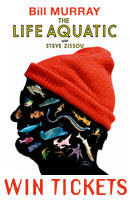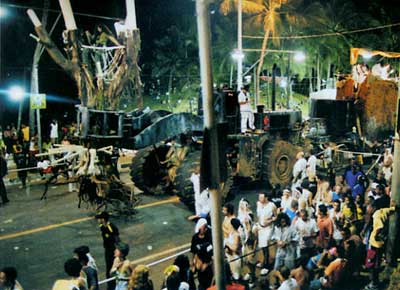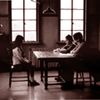 I’m a bit crazy with an offline deadline, so I’ll just give you your assignment:
I’m a bit crazy with an offline deadline, so I’ll just give you your assignment:
Starting with the prospect that wax does not, in fact, melt when submerged in the fiery pits of hell for all eternity by a wrathful God, please plot rank the following in order of sheer implausibility:
Nativity scene from hell [via towleroad]
odd, that: Meltdown at Madame Tussaud’s [Times of London]



 First they ran a contest for Miramax’s Hero which had such obscure questions about Jet Li minutiae that not even his agent–or even Li-fanatic-from-birth Jen Chung–could answer, even with a lifetime subscription to IMDb Pro.
First they ran a contest for Miramax’s Hero which had such obscure questions about Jet Li minutiae that not even his agent–or even Li-fanatic-from-birth Jen Chung–could answer, even with a lifetime subscription to IMDb Pro. Unlike that otherart rock band, Fischerspooner, Maxi Geil & PlayColt are actually still around. Also unlike FS, you might actually like hearing them play. [Other ways they differ from that flash in the 2002 pan: they’re smart, but not in a stupid way; knowing, but not in an annoying way; they actually perform, and not in a lipsynchy way; and they’re not tired; oh, and they don’t blowwww.]
Unlike that otherart rock band, Fischerspooner, Maxi Geil & PlayColt are actually still around. Also unlike FS, you might actually like hearing them play. [Other ways they differ from that flash in the 2002 pan: they’re smart, but not in a stupid way; knowing, but not in an annoying way; they actually perform, and not in a lipsynchy way; and they’re not tired; oh, and they don’t blowwww.]
 I’ve admired Hirokazu Kore-eda’s films since seeing
I’ve admired Hirokazu Kore-eda’s films since seeing  This, combined with his expert direction of non-professional actors, resulted in the masterful–and Cannes-winning–performances by his child actors in Nobody Knows, which will be released in the US in January.
This, combined with his expert direction of non-professional actors, resulted in the masterful–and Cannes-winning–performances by his child actors in Nobody Knows, which will be released in the US in January.